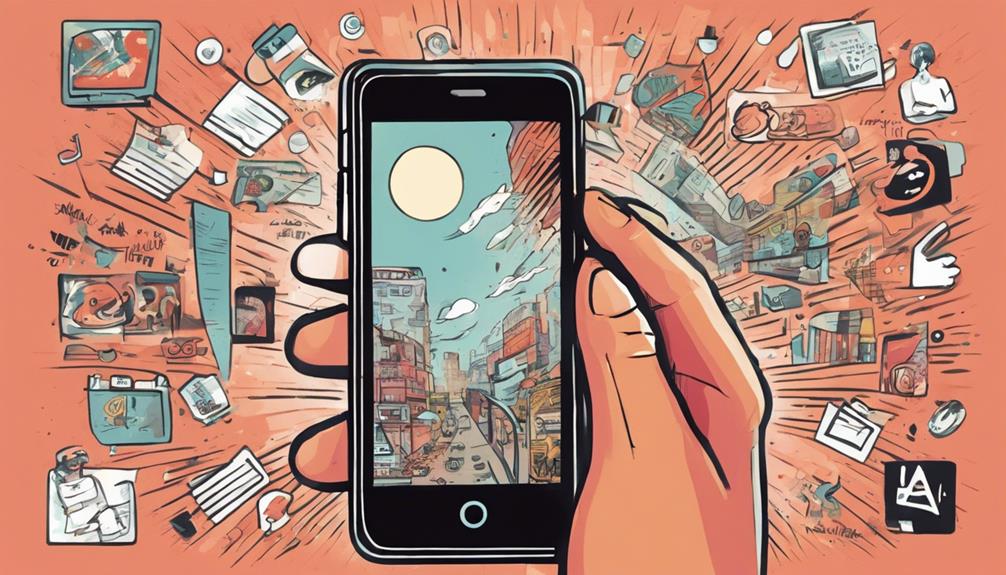To captivate customers, use persuasive words that enhance perceived value and spur action. Offer "free" trials or samples to create commitment-free experiences. Employ exclusivity phrases like "limited-time access" to prompt quicker decisions. Highlight "hassle-free" features to emphasize ease of use. Use action-oriented language like "grab" or "claim" to motivate immediate engagement. Personalize your communication for deeper connections. Justify purchases with clear benefits and comparisons to highlight value. Finally, use words like "best" to instill confidence in your quality. Explore more persuasive techniques to elevate your marketing strategy and boost your sales effortlessly. Ensure that your messaging is consistent across all platforms, from social media to email marketing. By engaging your audience efficiently, you can build trust and establish a loyal customer base. Consider using storytelling and testimonials to further connect with potential customers and illustrate the benefits of your product or service. These techniques will help create a compelling and persuasive marketing campaign that drives results.
Key Takeaways
- Use action-oriented language like "get," "claim," and "grab" to prompt immediate customer engagement and drive conversions.
- Incorporate exclusivity phrases such as "limited-time offer" to create urgency and enhance product appeal.
- Highlight guarantees to reduce purchase risk, increasing customer confidence and trust in your brand.
- Personalize the experience by using customer names and tailored offers to foster stronger connections and loyalty.
The Power of Free Offers
Free offers grab your attention and can greatly boost engagement with your brand. When you present something for free, you immediately enhance the perceived value of your product.
Studies show that people often prefer free items over low-cost alternatives, as demonstrated by a preference for a free Hershey Kiss over a priced Lindt truffle. This behavior highlights how free promotions can attract new customers and drive sales.
By offering free samples, trials, or giveaways, you create opportunities for potential customers to experience your product without commitment. This strategy not only increases engagement but also fosters a positive perception of your brand, paving the way for loyalty and future purchases.
Embrace the power of free offers to elevate your marketing efforts.
Creating Exclusivity and Urgency

Creating a sense of exclusivity and urgency can greatly boost your product's appeal and drive customer action. When customers feel that an offer is rare or time-sensitive, they're more likely to take immediate action.
Here are three effective strategies to create this feeling:
- Limited-Time Offers: Promote sales or discounts that are only available for a short window. This encourages quick decision-making.
- Exclusive Access: Use phrases like “members only” or “invitation only” to foster a sense of belonging and privilege among your customers.
- Scarcity Tactics: Highlight limited stock availability. When customers see that a product is scarce, they may feel compelled to purchase before it's gone.
Employing these tactics can greatly enhance your marketing efforts.
Emphasizing Ease of Use

To further enhance your marketing strategies, emphasizing ease of use can greatly influence customer decisions and satisfaction.
When potential buyers see that your product or service is user-friendly, they're more likely to engage and make a purchase. Highlighting simple features or intuitive processes not only attracts attention but also builds trust.
Customers often prioritize ease of use over complex functionalities, which can deter them. Use language that underscores how effortless your offering is to integrate into their lives. Phrases like “hassle-free” or “just a click away” resonate well.
Leveraging Scarcity in Marketing

Leveraging scarcity in marketing effectively taps into consumers' fear of missing out, driving them to make quicker purchasing decisions.
When you create urgency, you encourage immediate action, which can greatly boost your sales.
Here are three effective strategies to implement scarcity in your campaigns:
- Limited-Time Offers: Promote discounts or special deals that are available only for a short period.
- Limited Stock Notifications: Highlight remaining inventory to signal that products may soon sell out.
- Exclusive Access: Offer products or promotions that are available to a select group of customers, enhancing desirability.
Action-Oriented Language

Scarcity tactics can be even more effective when paired with action-oriented language that encourages immediate engagement from your audience.
Using words like “get,” “claim,” or “grab” creates a sense of urgency, prompting them to act now rather than later.
Research shows that action verbs can double conversion rates, making it essential to incorporate them into your marketing strategy.
Phrases like “Start your free trial” or “Try it risk-free” make your offer irresistible.
You're not just telling them what to do; you're inviting them to take action and enjoy immediate benefits.
Building Trust With Guarantees

Offering guarantees builds trust with your customers, reassuring them that their investment is protected and valued. When you provide a clear guarantee, it shows you stand behind your product or service.
Here are three key benefits of incorporating guarantees in your marketing strategy:
- Reduces Risk: Customers feel safer making a purchase when they know they can return it if it doesn't meet their expectations.
- Enhances Reputation: A solid guarantee can boost your brand's reputation, making it more appealing to potential buyers.
- Increases Sales: When customers see a guarantee, they're more likely to take action, translating into higher sales and customer retention.
Personalizing the Customer Experience

Personalizing the customer experience enhances trust and loyalty, making your brand more relatable and engaging. When you tailor your interactions, customers feel valued and understood. Here's how you can create a personalized approach:
| Strategy | Benefits | Example |
|---|---|---|
| Use Names | Builds connection | "Hi, Sarah!" |
| Tailored Offers | Increases relevance and engagement | "We thought you'd love this!" |
| Feedback Requests | Shows you care about their input | "What do you think?" |
The Importance of Justification

Justifying a purchase isn't just about explaining the product; it's about connecting the benefits directly to your needs and desires. When you provide clear reasons for your decision, you help reinforce the value of your choice.
Here are three key elements to include in your justification:
- Personal Relevance: Highlight how the product addresses your specific needs or enhances your life.
- Value Proposition: Explain the tangible benefits, like saving time or improving efficiency, that come with the product.
- Long-term Impact: Discuss how this purchase can lead to lasting benefits, such as cost savings or improved quality of life.
Highlighting Quality With 'Best'

When you want to emphasize quality, using the word 'best' can instantly capture attention and convey superiority in your product or service. This simple yet powerful term can enhance your brand's credibility, making customers feel confident in their choice. Just remember to back your claims with authenticity to avoid misleading your audience.
Here's a quick look at how 'best' can be showcased:
| Feature | Example Product | Benefit |
|---|---|---|
| Quality | Best Coffee Beans | Richer flavor experience |
| Performance | Best Smartphone | Faster processing speed |
| Durability | Best Hiking Boots | Long-lasting comfort |
| Value | Best Budget Laptop | Exceptional features for price |
The Role of Comparisons

How do comparisons influence your purchasing decisions? They play a significant role in helping you evaluate options and determine value. By comparing products side-by-side, you can easily spot the advantages that benefit your needs.
Here are three ways comparisons can enhance your decision-making:
- Clarity: They simplify complex choices, making it easier to choose the best option.
- Trust: Transparent comparisons build confidence in your decisions, knowing you've made an informed choice.
- Value: Highlighting differences helps you see where you get more for your money, ensuring you feel satisfied with your purchase.
Utilizing comparisons not only makes you a savvy shopper but also boosts your confidence in the products you choose.
Conclusion
In a world filled with choices, your words can make the difference between a passing glance and a lasting connection.
By harnessing the power of free offers and urgency, you'll not only attract attention but also foster loyalty.
When you emphasize ease and quality, you create a seamless customer experience.
So, don't just sell—engage.
Remember, it's not just about making a sale; it's about building a relationship that turns casual shoppers into devoted fans.









